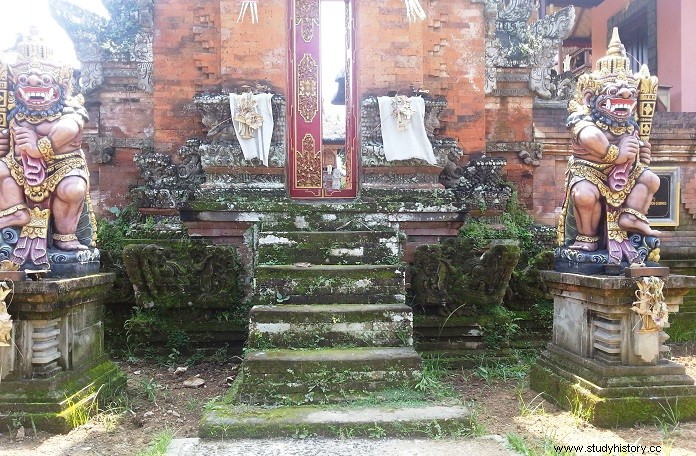
In ancient Indian Sanskrit literature, the island of Sumatra has been called Swarnadeep and Swarnabhoomi because huge deposits of gold metal were available in the upper areas of this island. Indian kings established their kingdoms in Sumatra in the 4th century AD. According to Chinese references, the king of Sri Vijayan dynasty of Sumatra sent his messenger to the king of China in AD 1017. From the 10th century AD to the 13th century AD, Arab geographers have used the word Lamri or Lamuri for this island.
Marco Polo called it Samara or Samarcha in the 13th century AD. In the fourteenth century AD the foreign traveler Audoric of Pordenone used the word Sumoltra for the sea. After this European writers started using the same word for this island. In the last decades of the 14th century, a kingdom called "Samudra Pasi" (near the sea) was established on this island. This "Samudrapasi" later came to be called Sumatra. Later this state was abolished by the Muslims and the Aceh Sultanate was established. Sultan Alauddin Shah of Aceh wrote a letter to Queen Elizabeth I of England in AD 1602, in which he introduced himself as "Sultan of Aceh and Samudra".
The kingdom of Melayu was abolished by the kings of Sri Vijaya dynasty. Sri Vijaya dynasty was a king who followed Buddhism. These were centered near Palembang. The kings of Sumatra spread Malay culture to the Indonesian islands from the 7th to the 9th century AD. The people of Sri Vijaya Empire used to trade in the sea islands. During the period of Sri Vijaya kings, Palembang was an advanced center of learning and learning and Buddhist monks from China used to come here for pilgrimage. The Chinese Buddhist traveler Ching studied Sanskrit in Sumatra before moving to India in AD 671. When he was returning to China after a trip to India, he once again stayed on the island of Sumatra and translated many Buddhist texts into Chinese there.
The kings of the Sri Vijaya dynasty were defeated by the Chola kings of South India in the 11th century AD. This weakened the Sri Vijaya dynasty and allowed Islam to enter Sumatra. However, Muslim traders from Arabia and India came to trade in Sumatra from the 6th and 7th centuries AD. At the end of the 13th century the Hindu kings of Samudra had to accept Islam and they came to be known as Aceh Sultanate in place of Sri Vijay. Marco Polo in AD 1292 and Ibn Battuta in AD 1345-46 visited the island of Sumatra and saw the Aceh Sultanate. The Aceh Sultanate continued to exist until the twentieth century AD. Later many states of Sumatra island lost their independence to the Dutch East India Company, but the Aceh Sultanate continued to take on the Dutch from AD 1873 to 1903.
In AD 1903, the Aceh Sultanate collapsed and the entire island of Sumatra went under the control of the Dutch. Since then Sumatra has become the main producer of pepper, rubber and oil for the Dutch. Many scholars and freedom fighters of Sumatra participated in the independence war of Indonesia, among which Mohamed Hatta and Sutan Sjahrir were prominent. Of these, Mohammad Hatta became the first Vice President of the Republic of Indonesia and Sutan Sjahrir became the first Prime Minister. E. From 1976 to 2005, an independent Aceh movement was launched against the Indonesian government. Thousands of civilians on the island of Sumatra were killed in this conflict in 2001 and 2002. Seven Hindu temples have been discovered in North Sumatra. The influence of Indian temple architecture, religion and philosophy can be clearly seen on these.
